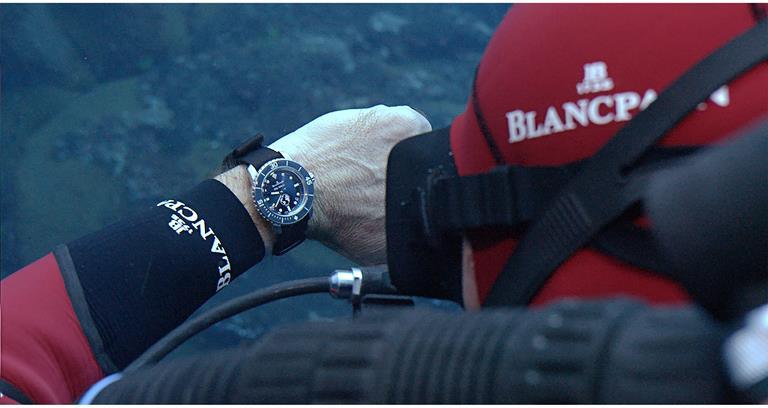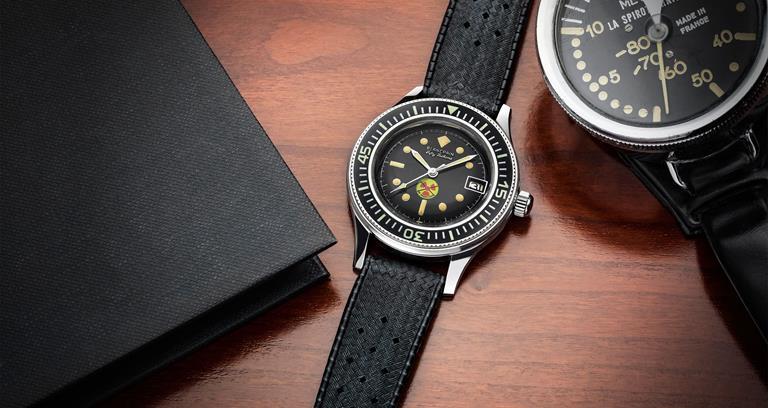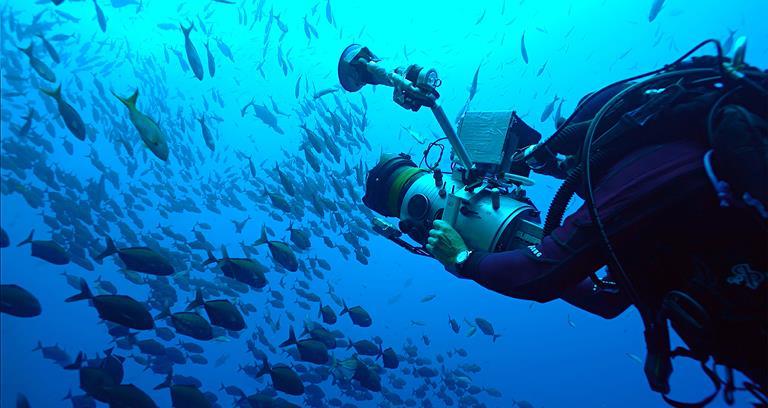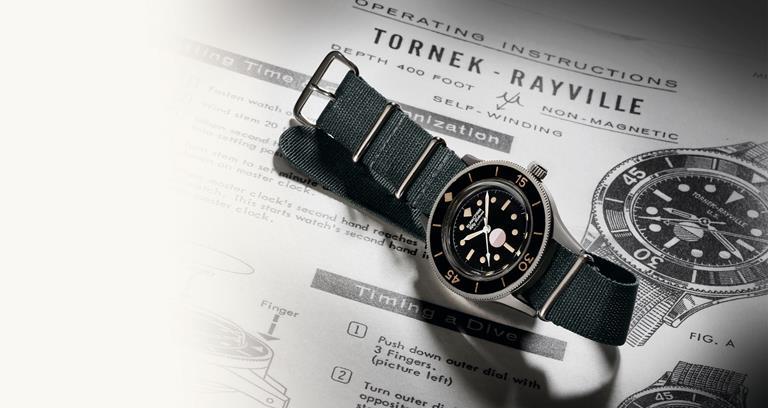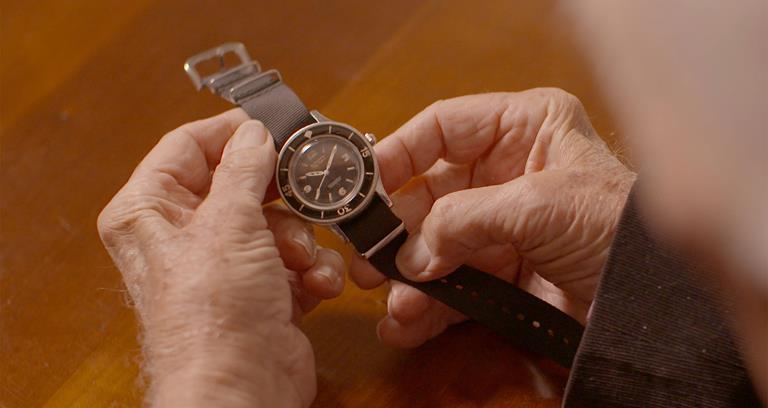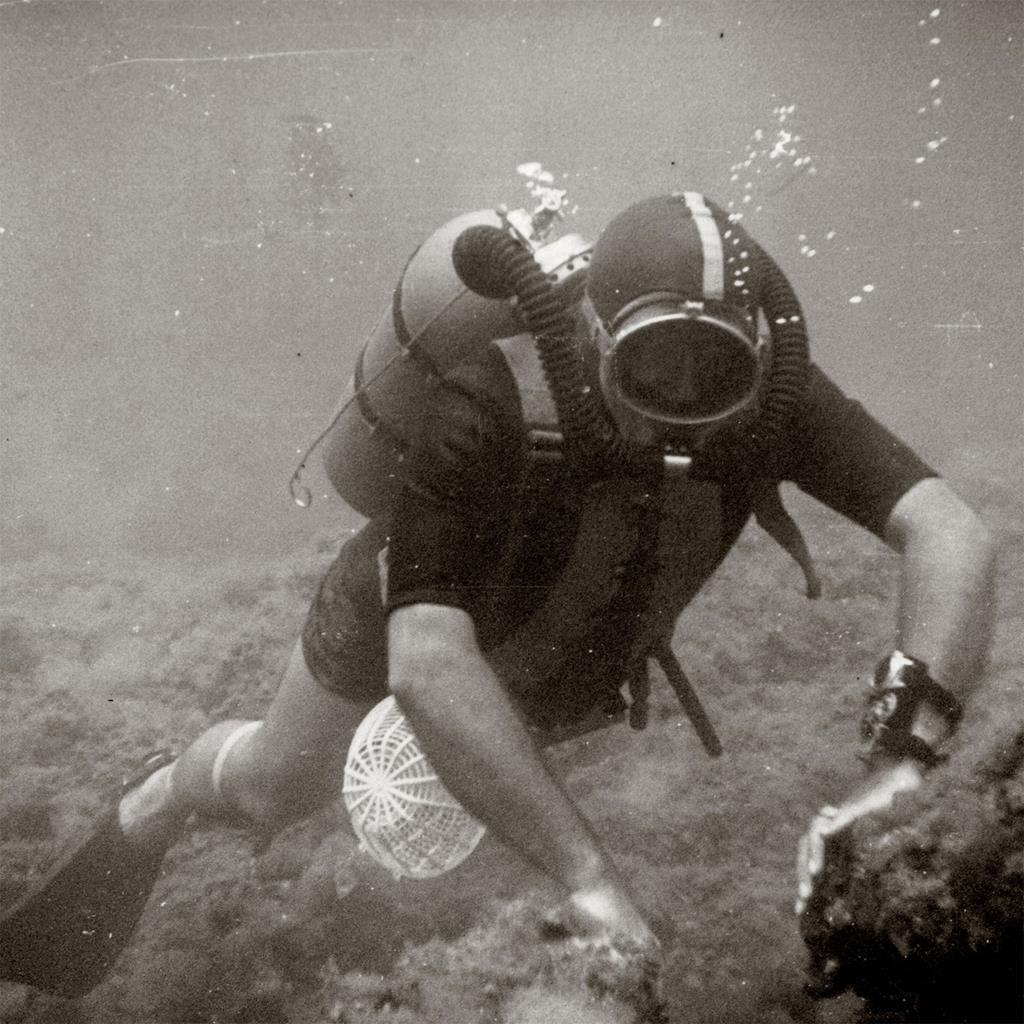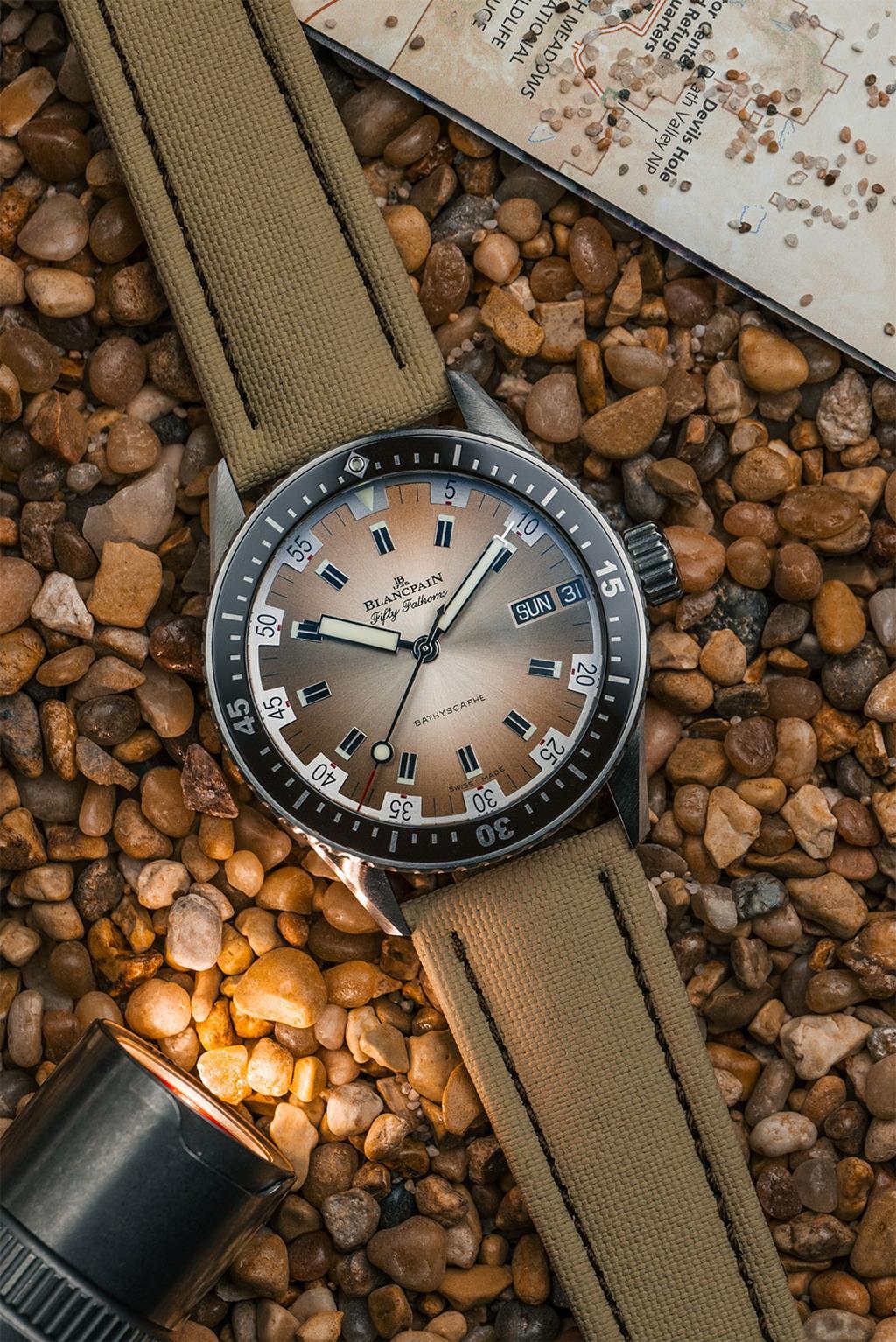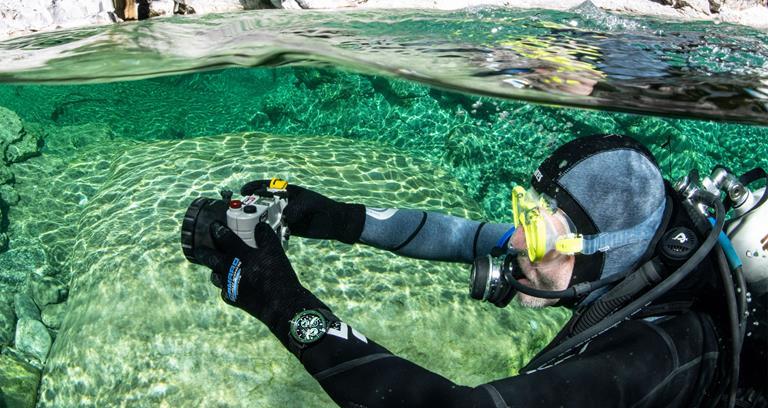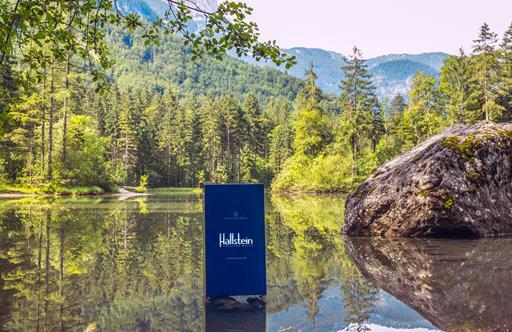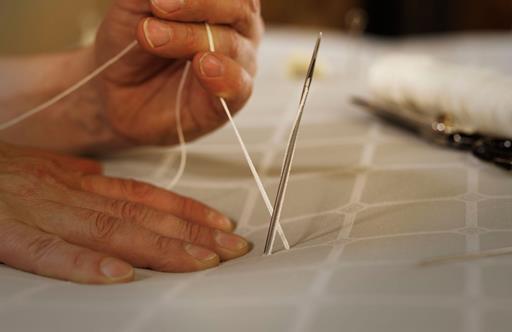Taking the Plunge
How Blancpain’s Fifty Fathoms Defined the Dive Watch
Instantly recognisable with a rotating bezel for tracking elapsed time, a legible luminous dial and a robust case capable of taking knocks without taking on water, the dive watch is so ubiquitous today, you are far more likely to see one on the street than underwater. But that wasn’t always the case for the popular sportswatch style that owes its distinctive design to Blancpain’s Fifty Fathoms, which debuted in 1953 and soon became standard-issue equipment for divers around the world.
History
In the post-war era, diving started gaining popularity as a recreational pursuit in addition to being a military one. By the early 1950s, those two worlds converged with the development of the Fifty Fathoms. Charged by the French Navy to develop a high-performance timekeeping instrument for its professional diving unit, Captain Robert “Bob” Maloubier, who headed the unit, and Lieutenant Claude Riffaud set out on a mission to find a producer.
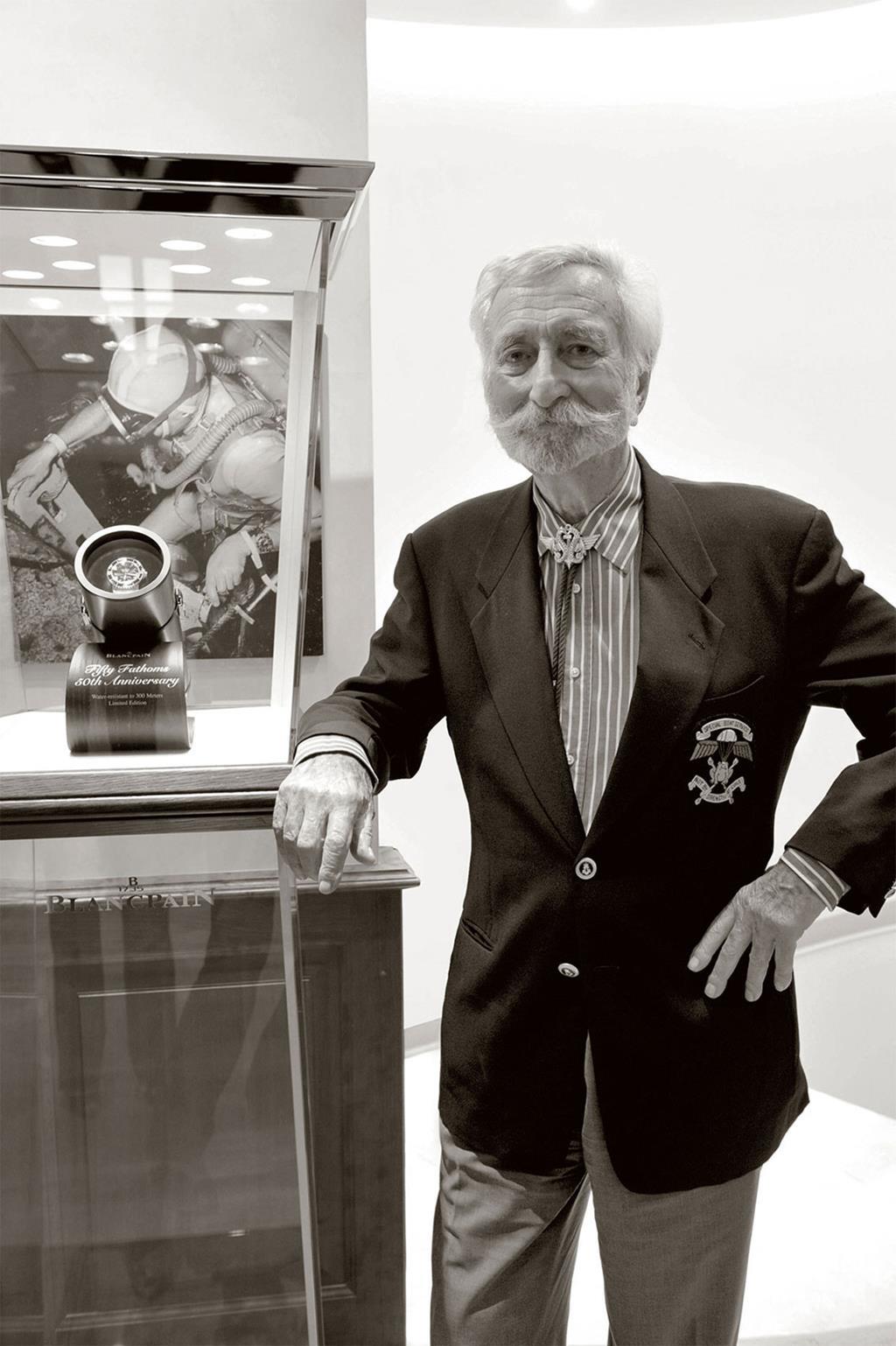
Robert Bob Maloubier ©Blancpain
“We got our pens, compasses and graph paper and tried to design a dream watch, the ideal watch for diving, which featured everything we wanted—luminous letters, not too many numbers, and a rotating bezel,” the now-late Maloubier explained in Fifty Fathoms: The History as Told by the Pioneers Who Created It, a 2019 documentary produced by the brand. “We drew up everything we had in mind and presented to a watch company, and they laughed in our faces.”
Undeterred, Maloubier was ultimately referred to Blancpain, where he found a kindred spirit in Jean-Jacques Fiechter, the CEO and an avid recreational diver, who was excited about building the quintessential diver’s watch.
Blancpain merged the specs from Maloubier’s team with Fiechter’s own innovations, which included a unidirectional rotating bezel to prevent accidental rotation, incorporating a double “O-ring” system to seal the crown, an automatic winding system to avoid wear and tear on the crown and protection from magnetic fields.
Fifty Fathoms debuted in 1953. The name is said to be based on the greatest depth (91.45 metres) that a combat diver could endure at the time, but Fiechter provided a more romantic account in the documentary, attributing the origin to Shakespeare’s phrase “Full Fathom Five” from The Tempest, adapted to the alliterative Fifty Fathoms.
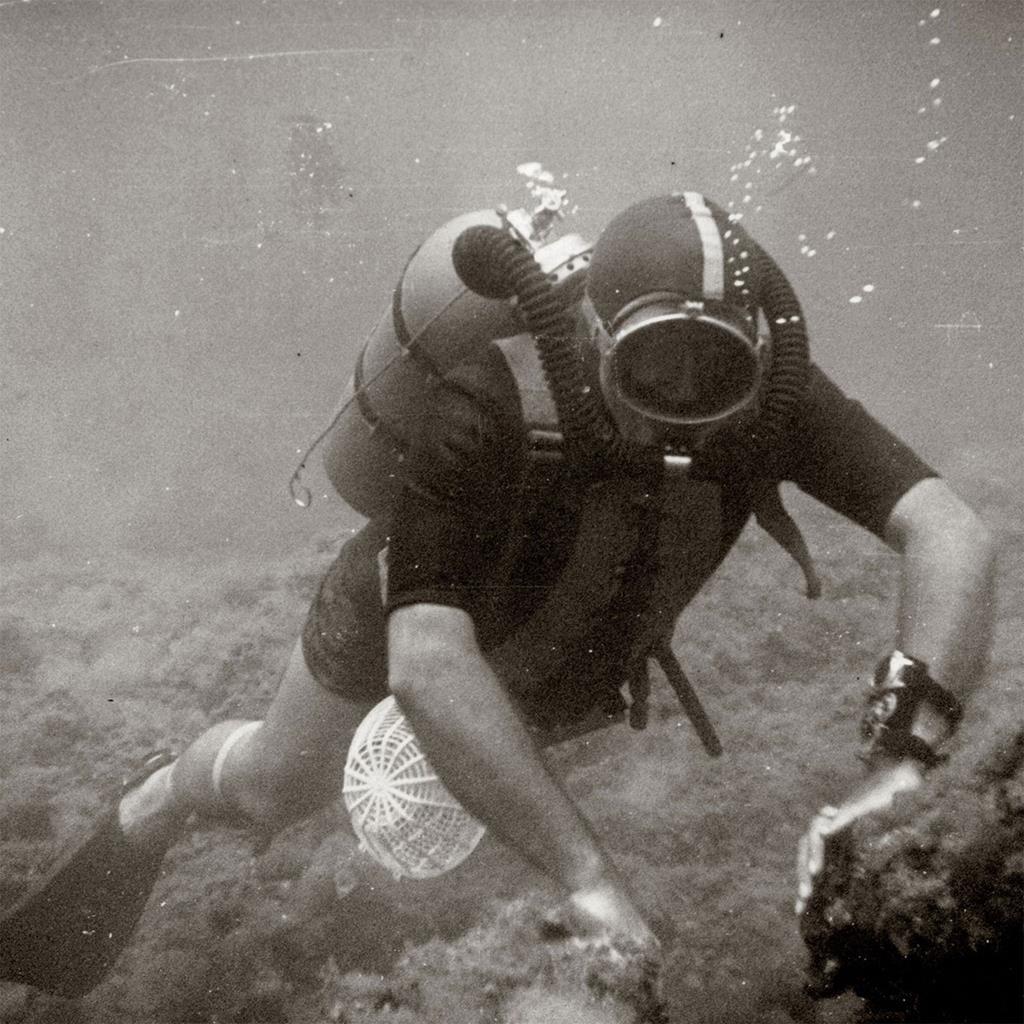
J.J. Fiechter, Blancpain CEO 1950-1980 during one of his first dives in the South of France ©Blancpain
Innovations
The French Navy was the first to get on board, soon followed by other military organisations. The U.S. Navy laid out its requirements in a 1955 draft specification calling for superior water resistance, light coloured hands on a dark background, a rotating bezel for timing dives, plus one additional element: a moisture indicator on the dial that changed colour if moisture was detected inside the case. That way, a diver who was issued a watch along with other gear could tell if it had been damaged on a prior dive.
That 1957 model was dubbed “Mil-Spec” for military specification. A second version saw a few changes, notably a case made of German silver with a matte finish to reduce reflection when surfacing and a movement with beryllium plates to reduce its magnetic signature.
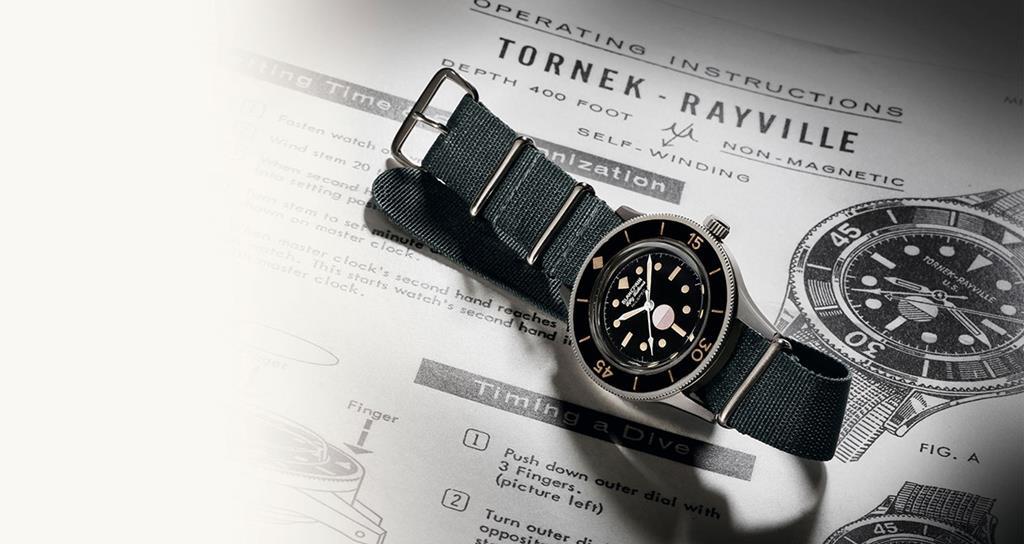
A vintage MIL-SPEC model ©Blancpain
On the model’s 60th birthday in 2017, Blancpain presented a Tribute remake, and this year it followed up with another limited edition.
Also, this year, Blancpain revived another emblematic military model with the Tribute to Fifty Fathoms No Rad based off a 1960s model used by the German Navy's combat swimmers. The defining feature is the yellow and red "no radiations" logo stamped on the dial, confirming that the luminescent material used was not radium. The Tribute to Fifty Fathoms No Rad is issued in a 500-piece limited series.
In addition to the military, recreational divers were a key market. Positioned as an essential diving instrument, Fifty Fathoms was exclusively sold through dive stores rather than watch stores in those early days.
Recognising that the 42mm diameter was too large for some recreational divers, particularly women, Fiechter envisioned a smaller watch with essential dive features that could also be worn as an everyday timepiece. He called the new model Bathyscaphe after the submersible developed by Swiss underwater explorer Auguste Piccard. The 1956 Bathyscaphe measured 37mm and incorporated a date display.
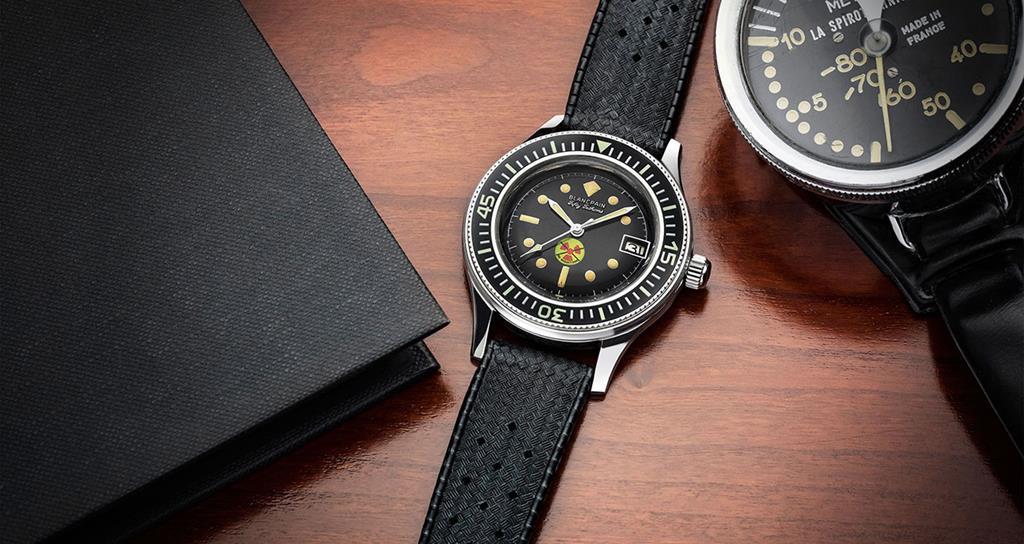
Blancpain Tribute Fifty Fathoms No Rad ©Blancpain
Following a nearly 20-year slumber during the 1980s and 90s, as the brand changed hands following the quartz crisis, Fifty Fathoms made a comeback in 1997 as the dive component to the water-land-air Trilogy series of sport watches.
Under its current president and CEO Marc Hayek, another passionate diver, Blancpain marked Fifty Fathom’s 50th anniversary in 2003 with a limited edition based on the timepiece that started it all. Just a few years later, in 2007, Blancpain went a step further by developing a new movement for its 21st-century rendition. The Caliber 1315 was endowed with three barrels and an extended power reserve for enhanced precision, stability and shock resistance. The goal was to create a robust movement paired with high-horology finishing.
The next advancement was adding complications including a flyback chronograph and a tourbillon. And in 2012, Blancpain took that notion to extremes with the X-Fathoms, a 55mm mechanical dive computer with water resistance down to 300 metres and groundbreaking functions that included two depth gauges and a retrograde 5-minute counter for decompression stops.
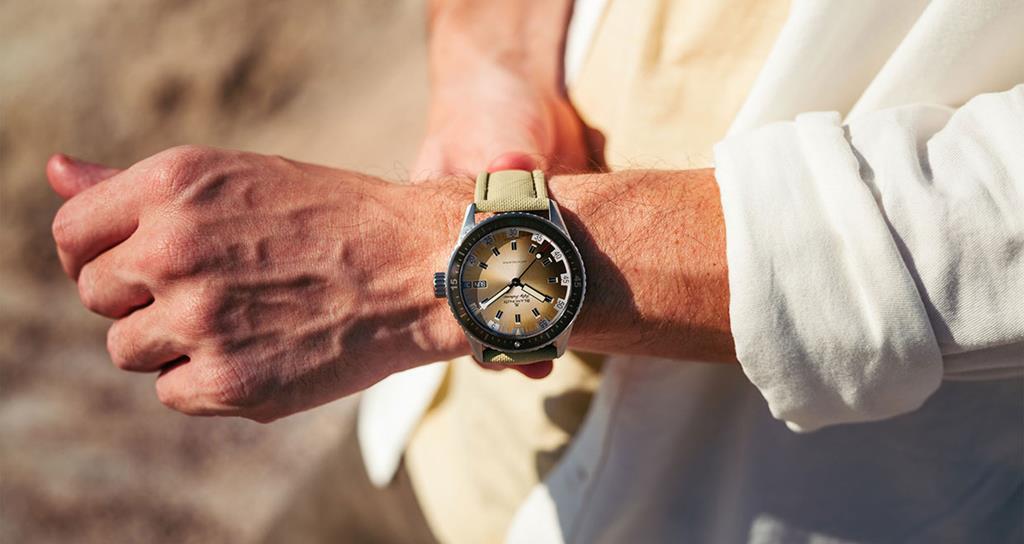
Blancpain Desert Fifty Fathoms Bathyscaphe Day Date ©Blancpain
The modern Bathyscaphe was born in 2013 taking cues from the original—a functional diver with sleeker dimensions more geared for everyday wear. Last year, colour infused the line with the green Bathyscaphe Chronograph Flyback and Bathyscaphe Day Date Desert Edition.
Conservation
Fiechter’s Fifty Fathoms was more than a mere watch. Developed as an essential instrument, it became the archetypal dive watch that made an impact on far more than timekeeping.
“It was pushing the limits of what you could do underwater from the position of timing – how far you could go, how long,” Hayek explained in the film. “It didn’t only help the army, it helped science, it helped discovering the underwater world, and I felt we have to give something like that back today as well.”
Arguably the most famous underwater explorer of all time, Jacques Cousteau played an early adopter role, wearing the original Fifty Fathoms for his historic dives showcased in the 1956 Oscar-winning film Silent World.
In this spirit, Blancpain and the National Geographic Society co-founded Pristine Seas Expeditions, which worked to convince political leaders to protect marine environments. Blancpain supported the initiative, from 2011 to 2016, and in 2012, the brand also became a founding supporter of the World Ocean Summit, promoting outcome-driven dialogue between global leaders to advance the ocean agenda.
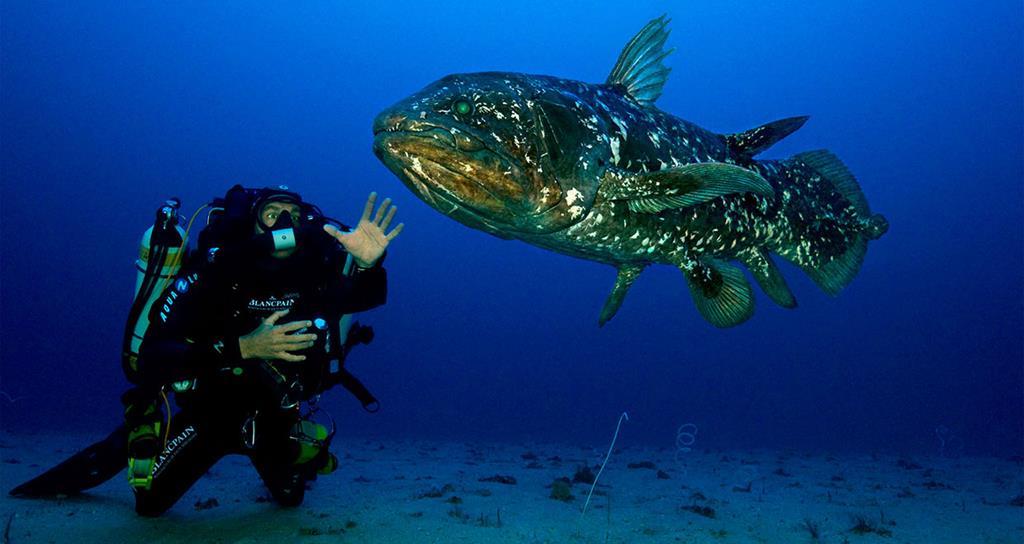
Gombessa I, South Africa, Meet the coelacanth_2013 ©Laurent Ballesta
In 2014, Hayek established Blancpain Ocean Commitment (BOC), which works closely with divers, scientists, underwater explorers, environmentalists and photographers, sponsors their work and spreads the word about the importance of ocean preservation.
That same year, Blancpain launched its first limited-edition BOC watch, and it has followed up with a new one every other year (with the exception of 2020). With the sale of each numbered watch, Blancpain makes an additional donation of €1,000 and enrols the buyer in the BOC Circle, which grants special access to exclusive perks such as invitations to private BOC events.
The brand has also teamed up with the French underwater biologist and photographer, Laurent Ballesta and sponsors his Gombessa diving team and its scientific expeditions.
In total, BOC has sponsored 19 expeditions and has contributed to establishing 11 marine-protected areas covering more than 4.2 million square-kilometres around the world.
“Fifty Fathoms is today, again, more than a watch and not only a dive instrument,” Hayek said.
